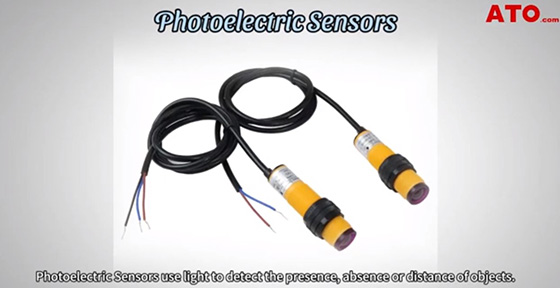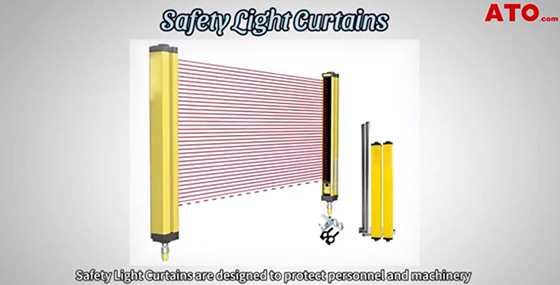What are the 10 Commonly Used Sensors?
In the world of industrial automation, sensors are essential components that enhance efficiency, safety, and accuracy. This article introduces the ten most commonly used sensors in industrial applications, highlighting their unique features and typical use cases.
Photoelectric Sensors
Photoelectric sensors operate by using light to detect the presence, absence, or distance of objects. Industrial photoelectric sensor consist of two main parts: an emitter and a receiver. When an object interrupts the light beam, the sensor triggers an output signal. Their versatility makes them ideal for various applications, including object detection, counting, and positioning tasks in automation and manufacturing.

Proximity Sensors
Proximity sensors can detect objects within a defined range without making physical contact. These sensors employ different principles, such as inductive, capacitive, or magnetic fields, to sense nearby objects. Commonly used in robotics and assembly lines, proximity sensor switches are valuable for object detection, position sensing, and control functions, allowing for efficient automation processes.
Fiber Optical Sensors
Fiber optical sensors utilize the transmission of light through optical fibers to detect objects. They are particularly advantageous in confined spaces or harsh environments due to their flexibility. Industries such as packaging, material handling, and semiconductor manufacturing frequently employ fiber optical sensors for tasks like presence detection, thickness measurement, and color sensing.
Safety Light Curtains
Safety light curtains are crucial for protecting personnel and machinery by creating an invisible barrier of infrared light beams. When an object interrupts these beams, the system responds quickly, often stopping machinery to prevent accidents. Safety light curtains are vital in applications involving press brakes, robotic cells, and access control, ensuring a safe working environment.

Magnetic Sensors
Magnetic sensors or switches detect the presence or absence of objects using magnetic fields. They are often implemented in industrial settings where contactless detection is necessary, such as in door and gate control systems, position sensing, and various automotive applications. Their reliability makes them a popular choice for many industrial tasks.
Ultrasonic Sensors
Ultrasonic sensors emit high-frequency sound waves and measure the time it takes for the sound waves to bounce back after hitting an object. This measurement allows for accurate distance or presence detection. Ultrasonic sensors are widely used for liquid level sensing, object detection, and distance measurement, making them valuable in diverse industrial applications.

Color Sensors
Color sensors, also known as color detectors or analyzers, are specialized devices designed to detect and analyze colors in various objects or surfaces. They accurately measure color properties such as hue, saturation, and brightness. Commonly used in printing, textiles, automotive, and quality control, color sensors play a crucial role in color matching, sorting, and ensuring consistent output in manufacturing processes.
Laser Sensors
Laser sensors utilize laser beams to detect objects with high precision and speed. They are capable of measuring distances, detecting small objects, and capturing detailed profiles. These sensors are frequently employed in robotics, assembly lines, and dimensional measurement tasks, making them essential for high-accuracy applications.
Pressure Sensors
Pressure sensors monitor and measure pressure levels across various applications. High accuracy pressure sensors can detect changes in air, gas, or liquid pressure and provide accurate readings. Industries such as HVAC, process control, and medical devices rely on pressure sensors to ensure critical pressure monitoring, which is vital for operational safety and efficiency.

Label Sensors
Label sensors are designed to detect and read labels or barcodes on products and packages. They facilitate accurate identification, tracking, and sorting of items in logistics, retail, and pharmaceuticals. By quickly scanning labels or barcodes, label sensors provide valuable data for inventory management and automation processes, streamlining operations in various sectors.
Understanding these types of sensors and their applications is essential for selecting the right technology for your industrial automation needs. Each sensor plays a crucial role in enhancing efficiency, safety, and accuracy in industrial processes, ultimately contributing to better overall performance. The following video will help us further understand the ten commonly used sensors.

